UNDERSTANDING FINANCIAL STATEMENTS
Mastering the art of reading P&L reports is crucial for making informed business decisions and driving financial success. By understanding the key components and interpreting the data effectively, you can gain valuable insights into your business’s financial performance and chart a course for future growth.
Key financial stats include:
INCOME: This section outlines the total income generated by the business from sales of goods or services. In Australia, revenue may include sales revenue, interest income, rental income, and other sources of income.
COST OF GOODS SOLD (COGS): COGS represents the direct costs associated with producing goods or services sold by the business. Such as raw ingredients for hospitality and for retailers or manufacturers, this includes the cost of raw materials, labour, and production expenses.
GROSS PROFIT: Gross profit is calculated by subtracting COGS from total income/revenue and represents the amount of money left over after covering the direct costs of goods or services sold.
OPERATING EXPENSES: Operating expenses include all costs incurred in running the business day-today, such as rent, salaries, utilities, marketing, accounting and administrative expenses.
TRADING INCOME/PROFIT: Operating income is calculated by subtracting operating expenses from gross profit and reflects the profitability of the business’s core operations.
OTHER PROFIT & EXPENSES: This section includes any non-operating income or expenses, such as interest income, gains/losses from asset sales, or one-time expenses.
NET PROFIT (or Loss): Net income is the bottom line of the P&L report and represents business’s profit or loss after all income, expenses, taxes, and other deductions have been accounted for.
Tips for Reading P&L Reports
FOCUS ON TRENDS: Compare P&L reports over previous periods to identify trends in revenue, expenses, and profitability. Look for any significant changes or anomalies that may require further investigation.
ANALYSE GROSS PROFIT MARGIN: Calculate the gross profit margin (gross profit divided by total revenue) to assess the efficiency of your operations. A higher gross profit margin indicates better cost control and pricing strategies.
MONITOR OPERATING EXPENSES: Keep a close eye on operating expenses and perhaps look for opportunities to reduce costs without compromising quality or productivity.
CONSIDER NON-OPERATING ITEMS: Be mindful of non-operating income or expenses, as they can significantly impact net income. Evaluate whether these items are recurring or one-time events.
COMPARE AGAINST INDUSTRY BENCHMARKS Benchmark your P&L performance against industry standards to gauge your competitiveness and identify areas for improvement.
Remember, knowledge is power, and with a solid understanding of your P&L report, you’ll be better equipped to navigate the complexities of business finance and steer your company towards long-term success.
Need help understanding your numbers? Reach out!
